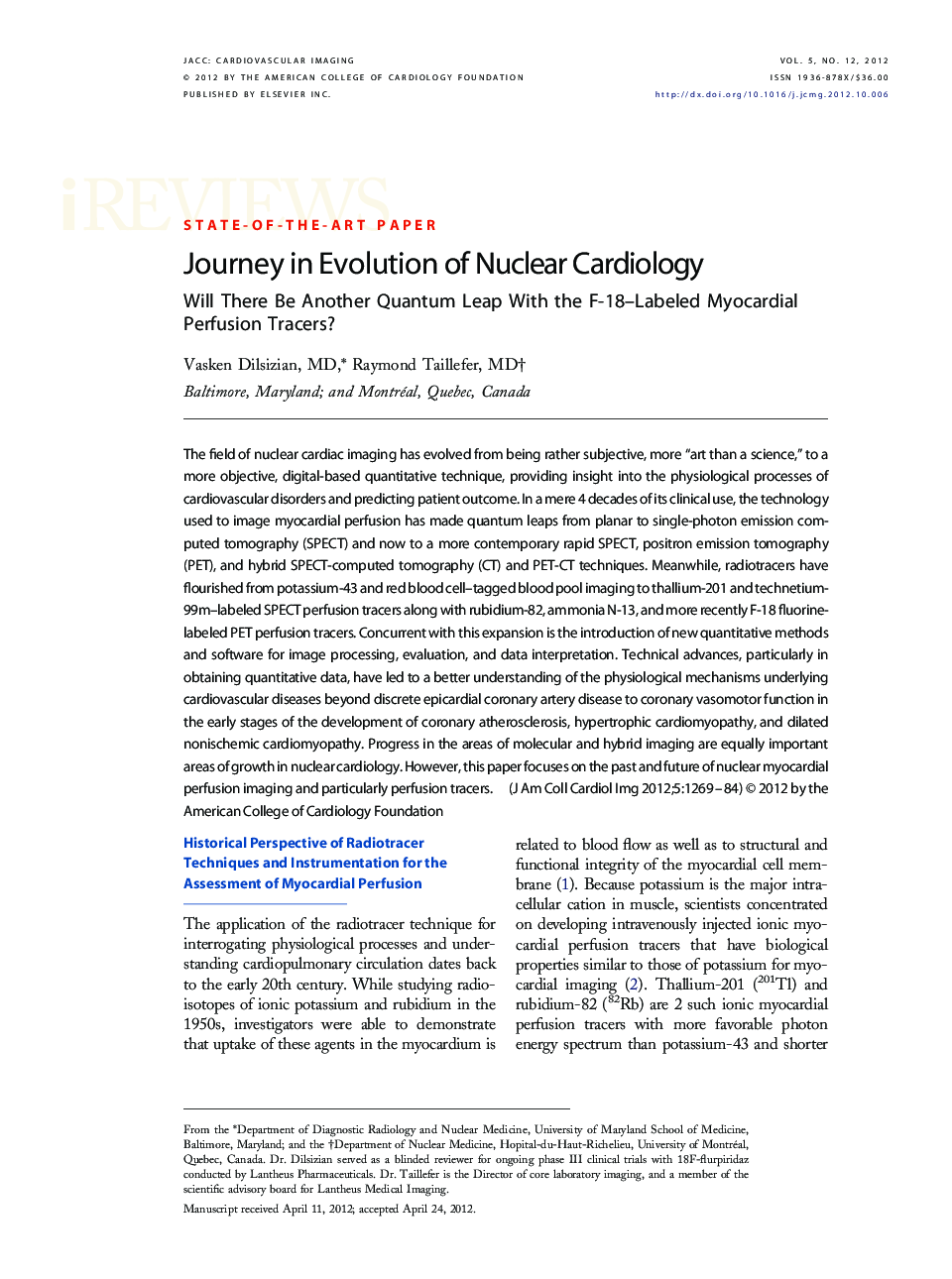| Article ID | Journal | Published Year | Pages | File Type |
|---|---|---|---|---|
| 2938529 | JACC: Cardiovascular Imaging | 2012 | 16 Pages |
The field of nuclear cardiac imaging has evolved from being rather subjective, more “art than a science,” to a more objective, digital-based quantitative technique, providing insight into the physiological processes of cardiovascular disorders and predicting patient outcome. In a mere 4 decades of its clinical use, the technology used to image myocardial perfusion has made quantum leaps from planar to single-photon emission computed tomography (SPECT) and now to a more contemporary rapid SPECT, positron emission tomography (PET), and hybrid SPECT-computed tomography (CT) and PET-CT techniques. Meanwhile, radiotracers have flourished from potassium-43 and red blood cell–tagged blood pool imaging to thallium-201 and technetium-99m–labeled SPECT perfusion tracers along with rubidium-82, ammonia N-13, and more recently F-18 fluorine-labeled PET perfusion tracers. Concurrent with this expansion is the introduction of new quantitative methods and software for image processing, evaluation, and data interpretation. Technical advances, particularly in obtaining quantitative data, have led to a better understanding of the physiological mechanisms underlying cardiovascular diseases beyond discrete epicardial coronary artery disease to coronary vasomotor function in the early stages of the development of coronary atherosclerosis, hypertrophic cardiomyopathy, and dilated nonischemic cardiomyopathy. Progress in the areas of molecular and hybrid imaging are equally important areas of growth in nuclear cardiology. However, this paper focuses on the past and future of nuclear myocardial perfusion imaging and particularly perfusion tracers.
